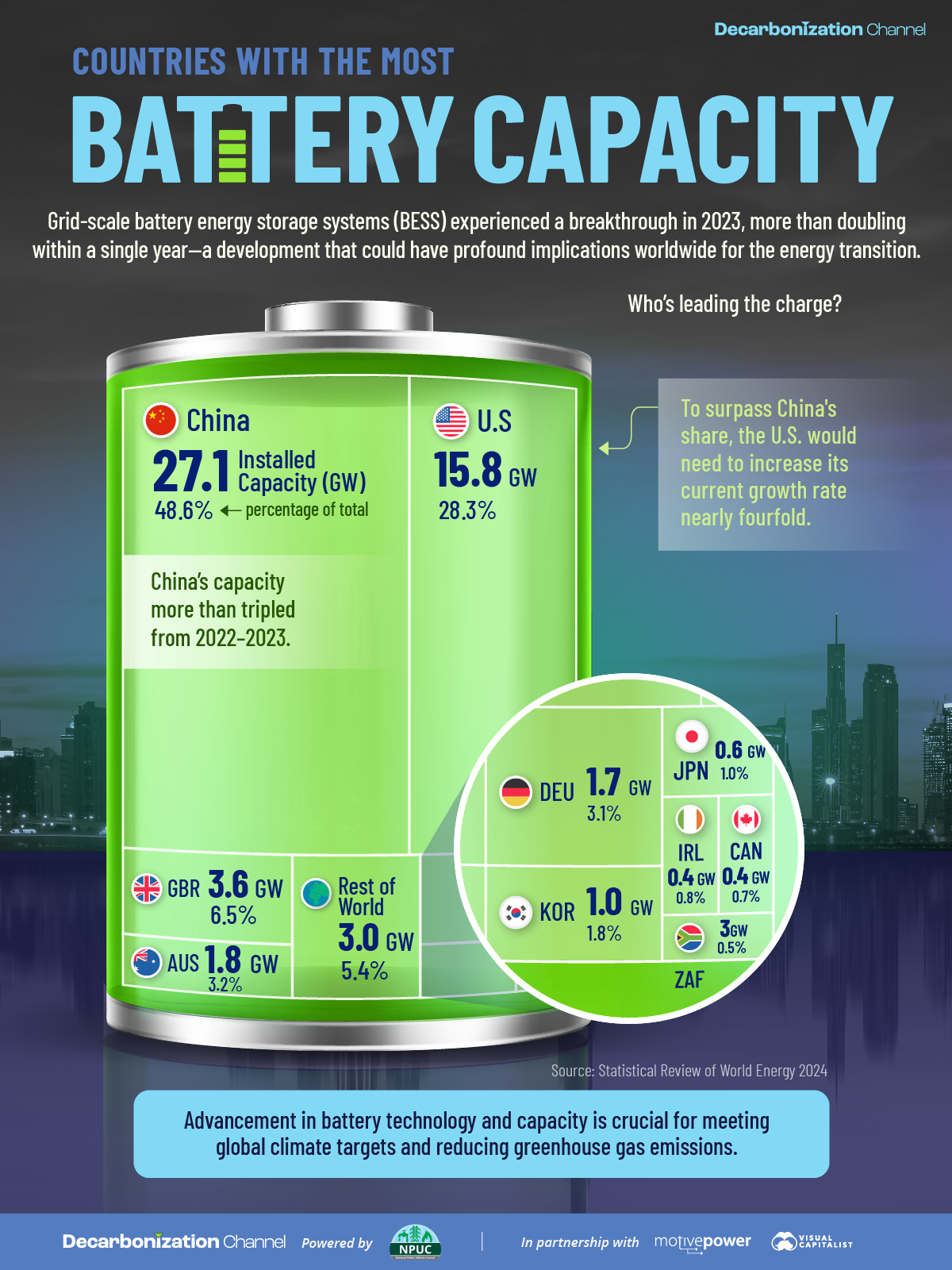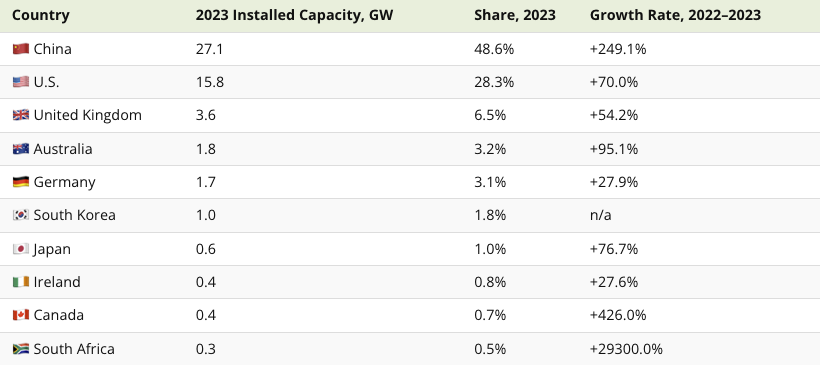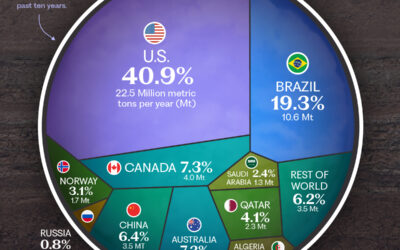Visualized: Countries by Grid Storage Battery Capacity in 2023?
According to the International Energy Agency, 1,300 GW of battery storage will be needed by 2030 to support the renewable energy capacity required to meet the 1.5°C global warming target. But how close is the world to reaching that target?
The Energy Institute’s annual Statistical Review of World Energy reveals the grid storage battery capacity of every country in 2023.
This treemap, created in partnership with the National Public Utilities Council, visualizes which countries had the most grid-scale battery energy storage systems (BESS) in 2023.
The U.S. and China’s Acceleration
China has nearly half the world’s grid storage battery capacity and keeps growing at a breakneck pace. From 2022 to 2023, the country added over 19 gigawatts of storage to its grid, moving from 7.8 to 27.1 GW.
The U.S. also significantly increased its capacity in 2023, moving from 9.3 to 15.8 GW. The two largest economies account for over three-quarters of the world’s grid storage battery capacity. California’s 8.6 GW is the largest capacity of any state and more than twice that of second-place Texas.
Although Canada had only 0.4 GW of storage capacity in 2023, it quadrupled its capacity from the previous year. However, its 426% annual growth rate is still not the highest of the top 10 countries.
It was South Africa that had the largest growth rate of capacity in 2023 due to its new facility in Worcester. Its annual growth rate was 29,300%.
Not all countries in the top 10 are experiencing significant growth. Ireland and Germany’s capacities only grew by 28% from the previous year. Meanwhile, South Korea’s capacity remained the same.
A Promising Future
The International Energy Agency estimates that 1,300 GW of battery storage will be needed by 2030 to support the renewable energy capacity required to meet the 1.5°C global warming target.
Despite ongoing regulatory challenges, such as inadequate environmental protection, the total global grid storage battery capacity in 2023 reached 55.7 GW. This marked a 120.8% increase from the previous year.
At a 120.8% growth rate, the 2030 target will be met two years early, in 2028.
Learn more about how electric utilities and the power sector can lead on the path toward decarbonization here.




